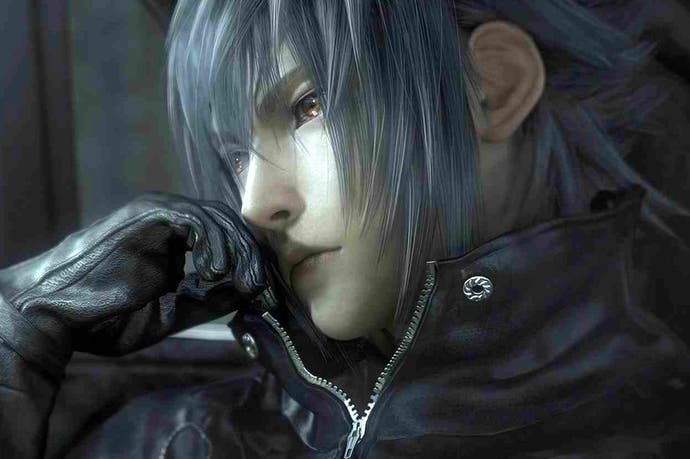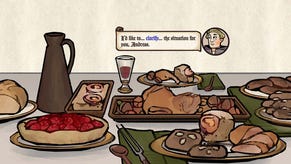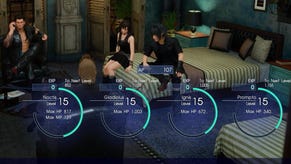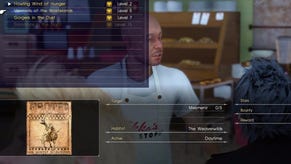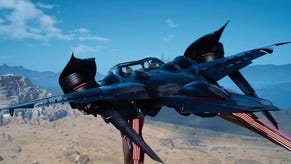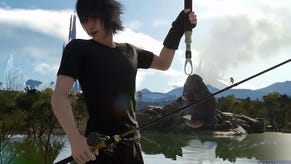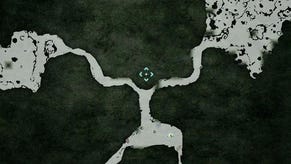Tech Analysis: Final Fantasy 15 Episode Duscae
Digital Foundry investigates Square-Enix's progress on PS4 and Xbox One.
Square-Enix's last generation Crystal Tools engine came and went with only four games to its name before being put to pasture - so when it was announced that the publisher would be switching to Unreal Engine 4 for new projects we were left wondering just what would become of their next-generation Luminous Studio. For the time being, at least, the answer is Final Fantasy 15 - the only announced title being created with this new in-house middleware solution. The team responsible for this new toolset is working closely with the game development team in order to deliver the most technically ambitious in-house game the Japanese publisher has ever produced. In a move recalling Square's glory days on the original PlayStation, the publisher has bundled a special demo version of Final Fantasy 15 known as Episode Duscae with another product, giving us our first hands-on with this ambitious new title.
However, prior to the launch of the demo, the director of the game cautioned that the build was still in its early stages and does not represent the final level of performance or visual quality planned for the final release. Of course, unlike most demos released in this day and age, Final Fantasy 15 really does have a significant amount of time left in development, making Episode Duscae more of a sneak peak than a typical demo. Keeping that in mind, and always eager to get our hands on a brand new engine, we jumped in to see if the director's warning holds weight.
As expected, it's immediately apparent that we're looking at a sub-1080p presentation here. We peg the PlayStation 4 version at 1600x900 while the Xbox One version turns in an even lower 1408x792. Both versions show plenty of aliasing in select conditions but, on the whole, the game's more natural environments appear surprisingly clean with a strong depth of field effect helping to keep shimmering at bay. Edge-smoothing is rather inconsistent, however, with certain elements lacking any sort of anti-aliasing coverage at all. There's no doubt that the game will benefit greatly from a bump up to full 1080p.
More detrimental to image quality, however, is the rather poor texture filtering used throughout. We came across a number of textures, such as the floors surrounding the garage and Chocobo Ranch, that are completely ruined by poor trilinear texture filtering. These same textures are generally of excellent quality when viewed head-on but the poor filtering reduces them to a blurry, soupy mess. Curiously, certain surfaces, such as road pavement, actually do employ some degree of anisotropic filtering and look relatively sharp at normal gameplay angles, so there is hope for the full game. Of course, it's clear that they didn't have cycles to spare at this point in time so eliminating AF may very well have been a choice they had to make.
If image quality is a bit disappointing, it's really performance that is in most need of improvement. On PlayStation 4, the game turns in a playable, if somewhat unstable level of performance hovering mostly around 30fps with extended drops to 25-28fps during most combat scenarios. We also noticed plenty of minor hitches and skips that appear as spikes on the frame-time graph leading to a drop in fluidity. It feels as if the engine is stalling out on a regular basis with these hitches - it's not pleasant but, at such an early stage, it's not entirely unexpected either and we hope that these issues can be ironed out with further development.
However, Xbox One turns in a more concerning level of performance. This version already operates at a lower resolution as it is but despite that, the frame-rate falls pretty far below the PS4 version. On average we're looking at a 5fps deficit in comparison, with precious few scenes ever reaching 30fps. The game immediately feels slower and less refined on Microsoft's platform leaving some of the scenarios feeling downright unplayable. Add in minor screen-tearing that rears its head across the top of the screen and you're looking at a rather poor experience. As it stands, this particular demo produces perhaps the lowest level of performance we've seen in an Xbox One game to date.
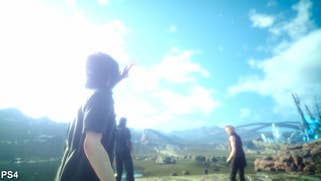
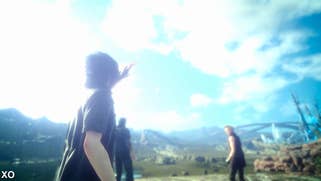
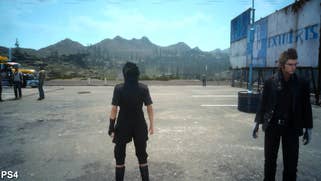

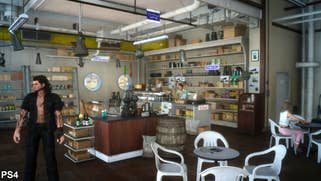

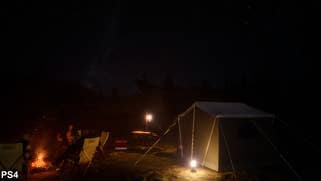
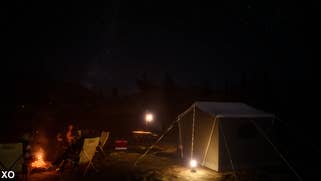
Of course, as noted above, we were cautioned that these elements wouldn't be polished up for this early look at the game so it will be interesting to compare the final game to the offering seen here. We certainly hope that the team manages to achieve its target, though, as the rest of the visuals are truly remarkable to behold and represent an enormous jump in quality from anything Square-Enix has ever produced. The Luminous Studio engine has allowed the team to craft an absolutely gargantuan environment to explore with an incredible attention to detail bringing everything to life. Once you're past the initial lengthy loading screen the game never takes you out of the world for any reason - everything is seamless and dynamic.
The list of technical features on display here is also quite lengthy, checking off all of the tick boxes you'd expect in a next-generation engine and then some. The game makes full use of physically-based rendering with an excellent materials system alongside a robust global illumination solution enabling realistic lighting conditions and a dynamic day/night cycle. The time of day cycling is truly above and beyond anything we've seen before in real-time and allows for some incredibly lush vistas. This is enhanced further by the inclusion of a full cloud simulation and an artistically lovely use of high dynamic range lighting. Taken as a whole, the results stand as some of the most impressive we've seen in an open world experience. It's easy to look beyond the demo's limitations and appreciate what the team is attempting on a wider scale.
With the quality of the games visuals it's easy to forget that Final Fantasy 15 is Square-Enix's first attempt at a full open world game. The terrain unfolds before the player with a realistic sense of scale that helps sustain the illusion of an immense world. Foliage stretches out just far enough to eliminate the sense of empty terrain geometry and a smooth LOD system keeps annoying objects pop-in at bay. All of these elements are influenced by an adjustable wind simulation that allows the developers to attach variable gusts of wind to objects and events, resulting in grass, trees, and clothing all blowing around very realistically. Cloth simulation is particularly impressive here and used in abundance with the characters' clothing standing out as the most impressive example. Even the hair receives plenty of attention with its complex mesh bobbing around realistically on all four main characters as they run across the landscape.

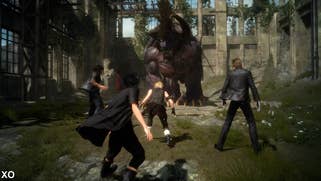
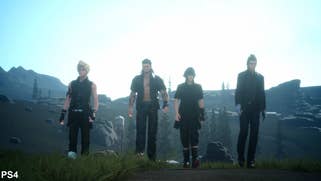
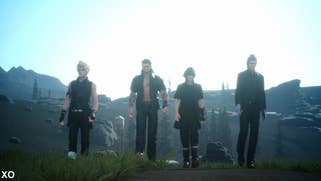
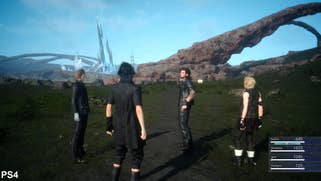
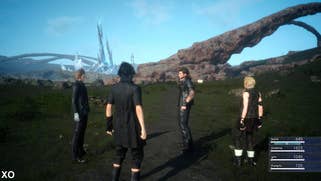

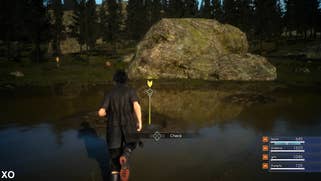
The character models as a whole are certainly a highlight as well. Square-Enix claims that models peak at 100,000 triangles including LOD with upwards of 20,000 dedicated specifically to the characters hair style. Character models are built around 600 individual bones, 10-12 times greater than their last-generation efforts, allowing for more complex motion on the whole. This is topped off by subsurface scattering, used to great effect in combination with the realistic clothing materials on display. Looking past the game's somewhat rough image quality, one can really start to see something here which resembles pre-rendered CG.
However, what really brings these characters to life, is the remarkably complex animation system. There is just a tremendous amount of animation in this game and, from what we've gathered, it appears to use some sort of animation AI routine. This helps control how characters move and react to their surroundings by focusing their attention on the expected points of interest. The way characters transition in and out of various actions feels quite natural and the three party members by your side always feel grounded within the environment. Above all else, the quality and variety of the animation really adds a lot to the experience.
Other details of note - a GPU-accelerated particle system is in play here, producing results not unlike last year's inFamous Second Son. When triggered in the massive summoning of Ramuh, the screen fills with a remarkable fireworks display of particles that leaves your jaw hanging open. At night-time, the player is given a lapel-mounted flashlight that generates shadows. Shadow quality is somewhat hit or miss though, with the distance fall-off on shadow resolution feeling a bit steep at points, leading to a loss in detail at a rather close proximity.
One other area that we feel needs a bit of work is the game's camera system. As it stands, the action is extremely fast-paced and relies on players dashing and warping around the battlefield. At the moment, the camera simply can't keep up, particularly in enclosed areas where you're just as likely to find the camera buried in a tree as focusing on an enemy.
Ultimately, Final Fantasy 15 Episode Duscae is an impressive preview of what's to come, limited only by the unfinished, unoptimised nature of its rendering technology. The engine displays all of the expected next-generation features while bringing its own unique flavour to the experience. As Square-Enix's first internally developed open world game, the attention to detail really is remarkable and easily comparable to the best from Rockstar. Compared to other sandbox fantasy games from the last few years, Final Fantasy 15 really feels like a true next-generation leap.
The real question is whether or not the development team will be able to get a handle on the game's performance problems by release. With so much time until then we're certainly hopeful that they can reach the 1080p30 target, but based on this showing in this demo, we still have concerns. On PlayStation 4 it certainly seems achievable, but the Xbox One version runs at a low enough resolution and frame-rate that the optimisation effort is frankly immense. We have no doubt that the final game will look and run better on both platforms, but can they really ramp it up to a full 1080p 30fps when the current level of performance is so lacklustre? We're cautiously optimistic. Still, as a bonus included with another interesting Final Fantasy title - Type-0 HD - Episode Duscae is an interesting and enjoyable experience that's well worth jumping into.
